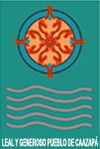Caazapá Department
| Caazapá | |||
|---|---|---|---|
| Department | |||
|
|||
 |
|||
| Coordinates: 26°12′S 56°23′W / 26.200°S 56.383°WCoordinates: 26°12′S 56°23′W / 26.200°S 56.383°W | |||
| Country |
|
||
| Capital | Caazapá | ||
| Government | |||
| • Governor | Avelino Dávalos Estigarribia (ANR) | ||
| Area | |||
| • Total | 9,496 km2 (3,666 sq mi) | ||
| Population (2002) | |||
| • Total | 139,241 | ||
| • Density | 15/km2 (38/sq mi) | ||
| Time zone | AST (UTC-04) | ||
| • Summer (DST) | ADT (UTC-03) | ||
| ISO 3166 code | PY-6 | ||
| Number of Districts | 10 | ||
Caazapá (Spanish pronunciation: [ka(a)saˈpa]) is a department in Paraguay. The capital is the city of Caazapá. Among Paraguayans, the department is well known for its orange and mandarin trees, and for its forest hills. The eastern part of Caazapa is relatively undeveloped and consists of rolling hills and large swaths of Brazilian Atlantic interior rainforest between the San Rafael mountains to the south and the Yvytyrysy mountains to the north. The Western part is an area of low-lying marshes and swampland area, and consists of wetlands and tributaries to eastern Paraguay's largest river, the Tebicuary. Many indigenous groups make their home in what remains of the rainforest especially south of the unpaved highway between San Juan Nepomuceno and Tavaí. Mby'a and Guayaki people, who practice farming corn, cassava and yerba mate under the canopy of the forest live in small bands and travel mainly by foot. They are technically protected and their land is a national reserve, but illegal loggers, ranchers and more recently, Brazilian soybean growers have encroached upon their territory. With Paraguay's weak legal infrastructure, little can be done by way of enforcement or sanctions.
The department is divided in 11 districts:
Its history is bound to the first franciscan religious missions in Paraguay, who found several towns, where they accomplished to accept the natives of 10 years of patronage. It is one of the first Missions established in Río de la Plata.
The central region of the country, such as Caazapá is the region that helped the most to consolidate and form the history of Paraguay. The presence of the Franciscans in the Missions Yuty and Caazapá is a process that started in 1607 and continued through the 17th and 18th centuries. In 1786, the Mission San Juan Nepomuceno was found, which helped, along with other localities to work and exploit the land.
...
Wikipedia


